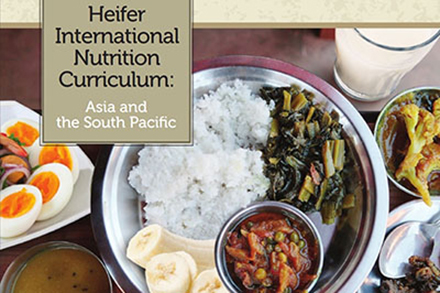Every child has the right to nutritious meals that ensure they grow up healthy and strong. However, 3.1 million children under 5 years old die every year because their meals lack the necessary protein, vitamins and minerals that equal a nutritious diet. Businessman and philanthropist Bill Gates has spent the last few weeks exploring malnutrition in Africa, researching why hunger still exists there and exploring malnutrition’s effects on growth and brain development.
“When people in extreme poverty get an animal,” he said, “extraordinary things start to happen. “They get more protein and other nutrients from milk and eggs, which helps keep them healthy and able to go to school or work. They also make more money, because they can sell whatever milk or eggs that they don’t eat. It’s pretty amazing.”
Like Gates, Tufts University researcher and pediatrician Dr. Laurie Miller was concerned about child nutrition. She conducted a two-year study among Heifer Nepal project families. The data from her study was received in 2013 and Heifer International’s Asia Council decided to create a curriculum on human nutrition to be more intentional about that aspect of our mission. Heifer Asia Program Officer Rebecca Alderfer coordinated the effort, and each Asia area country program appointed a representative to collaborate on the development of the curriculum. Asia staff also worked with Tim Newman and Jen Girten from Heifer's Education team to create the final product.

The process began with several headquarters-based staff meetings with Dr. Rosemary Rodibaugh, professor of nutrition at the University of Arkansas in the Division of Agriculture. She provided data and real-life scenarios from the USDA and other sources, which the team supplemented with online research to adapt to Asian contexts through the inclusion of locally available and culturally appropriate foods.
Girten, Newman and others drafted the curriculum, which was sent to every country program in Asia for review. Their feedback was used to create the final draft, which was shared with Rodibaugh and Miller. Both were very enthusiastic.
The "Heifer International Nutrition Curriculum: Asia and the South Pacific" is available online. It has been shared widely, including with other area programs at Heifer. A physical edition was not published because the information is intended to be adapted to local contexts.
Heifer Asia country staff have taken this curriculum to local experts at universities, government agencies and other organizations, which have helped further adapt it for individual countries. Country staff were eager to learn from the experts so they would be qualified to provide excellent training to Heifer's project partners and project participants. The country staff organized trainings for local staff and partners, and this curriculum is now mainstreamed in all of Heifer's Asia projects.